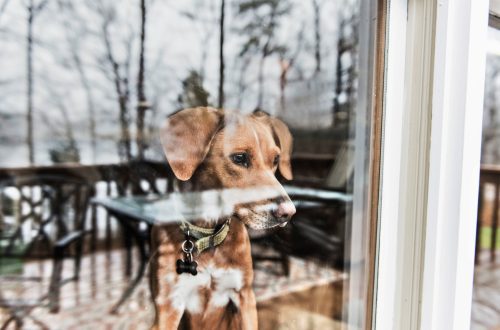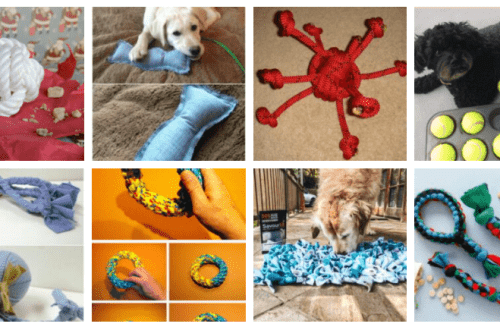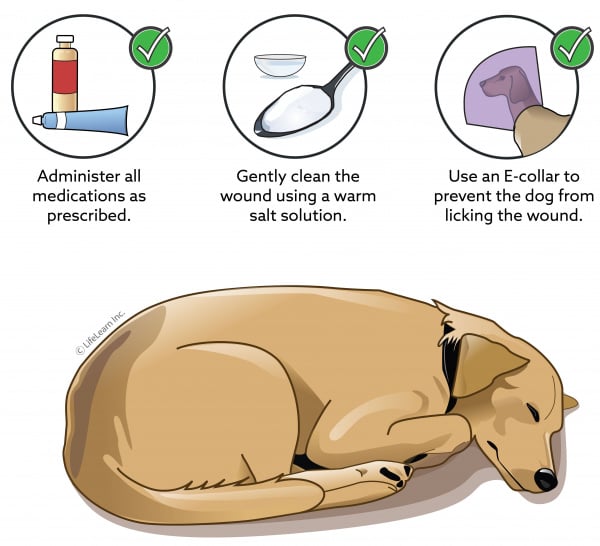
How to treat a cut in a dog
Despite the best efforts of owners, dogs can sometimes get hurt. Therefore, every responsible pet owner should know how and how to treat a cut in a pet at home. The correct composition of the first aid kit for dogs will help to quickly treat a cut in a dog, and knowledge of emergency care will help the owner determine exactly when it is necessary to see a doctor urgently.
Contents
How to treat a cut in a dog
If the dog is hurt, the following instructions will help:
 Step 1: Assess and stop any bleeding
Step 1: Assess and stop any bleeding
First of all, you need to check if the wound is bleeding. If blood oozes from it, you can lightly press it with a small handkerchief or gauze, depending on the size of the wound. You need to ask the dog to sit or lie down, and with your hand press the napkin to the wound with enough force to stop the bleeding. If the pet is calm, the blood will likely clot and the wound will stop bleeding within a few minutes. If the dog is agitated, it may take longer due to the increased blood pressure. If the bleeding is heavy, it means that a larger blood vessel has been damaged. The wearer should continue to apply pressure to the wound during the trip to the clinic.
Step 2: Cleanse the wound
If there are foreign objects in the wound, such as wood chips or leaves, flush the wound with plenty of warm tap water to wash away dirt and bacteria from the surface of the wound.
Step 3: Disinfect the wound
There are several products that can be used to disinfect a cut.
For example, diluted betadine is an excellent disinfectant to keep in your first aid kit. A good alternative to betadine is chlorhexidine solution. Hydrogen peroxide should not be used to clean a wound because it damages skin cells and can slow wound healing.
First you need to disinfect the cut. If it is a bite, you should inject a disinfectant into the puncture site to flush out the bacteria. You should also seek the advice of a veterinarian, as bites in many cases lead to the development of secondary infections. After cleaning and disinfection of the wound, a thin layer of ointment with the Antibiotic Complex should be applied to its surface.
How to treat a cut in a dog: additional precautions
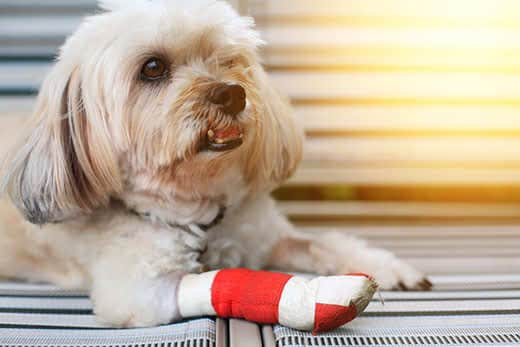 It is important to treat cuts and scrapes promptly to prevent infection. If the wound is treated too late, it will take longer to heal and require additional expensive treatment.
It is important to treat cuts and scrapes promptly to prevent infection. If the wound is treated too late, it will take longer to heal and require additional expensive treatment.
An injured dog is in pain and frightened, so it may react aggressively. It is possible to treat a wound in a dog at home only if the owner is sure that she will not bite someone who tries to help her. It is necessary to use a muzzle that you can make yourself and ask someone to help. When treating a wound yourself, it is important to remain calm, as the animal can sense the owner’s stress.
When to contact the veterinarian
Here are the types of injuries that require veterinary care:
- Bites. They pose a risk of infection.
- Deep cuts with through damage to the skin.
- Cuts longer than 3 cm.
- Cuts that constantly bother the dog.
- Cuts that don’t heal within a week.
- Cuts that look infected. They are characterized by redness, heat, swelling, pus-like discharge, and an unpleasant odor.
- Any injury after which the dog begins to feel bad. Symptoms may include excessive fatigue, loss of appetite, vomiting, diarrhea, etc.)
- Any wound that is of concern to the wearer.
If the owner treated the wound properly, it should heal in less than a week. Any cuts that do not heal within this period or are accompanied by signs of infection should be taken to the veterinarian. The pet will be incredibly grateful for the care of his health.



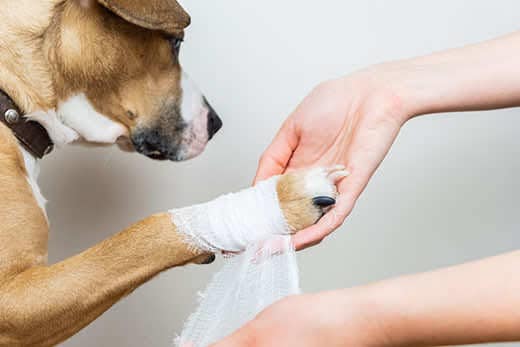 Step 1: Assess and stop any bleeding
Step 1: Assess and stop any bleeding
